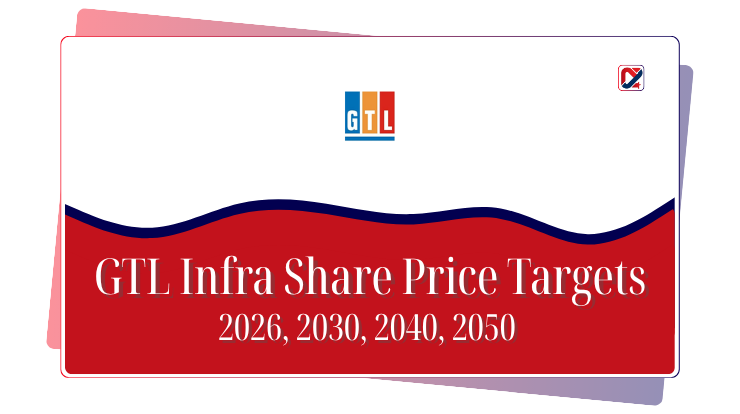Dish TV India Ltd is one of India’s long-standing DTH (satellite television) providers, offering direct-to-home channels, set-top box services and increasingly, digital streaming and content aggregation. With the media landscape in India shifting rapidly — more OTT consumption, changing advertising models, and pressure on traditional TV viewership — Dish TV is at a strategic inflexion. The purpose of this article is to explore Dish TV’s business model, recent performance, and then outline plausible long-term share price trajectories given various scenarios.
Table of Contents
Company Overview
Background
- Dish TV India Ltd was incorporated and began offering DTH services in the early 2000s, building a significant subscriber base in India.
- The company has evolved its offerings from purely traditional satellite TV to include set-top boxes, hybrid OTT + DTH services, and digital content platforms such as the “Watcho” app.
- Headquartered in Noida, Uttar Pradesh, India.
Business Model
- Primary revenue sources: subscription fees for DTH services, distribution of channels/licensing fees, advertising revenues tied to its platform, set-top-box sales/subsidies, and increasingly digital/OTT service revenues.
- In recent years, the company has been shifting — for example, introducing bundles combining DTH + OTT access, phasing out heavy subsidies on equipment and focusing on improving monetisation and cost structure.
- Market position: Dish TV remains a notable player in India’s DTH segment with major reach; however, the competitive pressure from streaming platforms and cable/OTT convergence is high.
| Metric | Details |
|---|---|
| Company Name | Dish TV India Ltd |
| Industry | Media & Entertainment / DTH & OTT |
| Listed On | NSE: DISHTV |
| Recent Revenue Trend | FY24 revenue ~ ₹18,565 million |
| Recent Profitability | FY24: EBITDA ~ ₹7,537 million, but net loss (including adjustments) was significant. |
| Debt Status | The company reported it has achieved a debt-free status (zero gross debt) for its major operations. |
Key Notes:
- Revenue and margins have been under pressure,with declines in recent years.
- Strategic pivot toward digital/OTT and reducing set-top-box subsidies to improve cost efficiency.
Financial Performance (Last 3–5 Years)
Here’s a summary table based on the available data:
| Year | Operating Revenue* | Net Profit/(Loss) | Key Notes |
|---|---|---|---|
| FY2022 | ~ ₹28,025 million | Loss noted | Efforts are underway to pivot business model |
| FY2023 | ~ ₹22,619 million | Loss continues | Declining revenue trend |
| FY2024 | ~ ₹18,565 million | Net loss sizeable | Efforts are underway to pivot the business model |
| FY2025 (Q1) | ~ ₹334.11 crore (Q1) | Loss ~ ₹94.53 crore (Q1) | Revenues down ~27.5% YoY |
* Figures approximate and rounded; revenue in millions of rupees unless otherwise stated.
Analysis:
- The company’s top line has been on a steadily declining path, indicating the structural challenge of the DTH business in India.
- Despite cost control measures and a shift to digital, profitability remains elusive with recurring losses.
- The zero-debt status is a positive, offering some balance-sheet relief and potential flexibility.
- Digital/OTT initiatives are at a relatively early stage; monetisation and scale remain key.
Key Growth Factors
Here are some potential growth drivers for Dish TV:
- Digital/OTT transition: As the viewing audience shifts from linear TV to OTT, Dish TV’s push into hybrid offerings (DTH + OTT bundles) gives it a chance to capture value in both worlds.
- Cost-efficiency improvements: By phasing out heavy subsidies on set-top boxes and reducing acquisition costs, the company may improve margins.
- Debt-free status: With very low or zero debt, the company can re-allocate resources toward growth initiatives rather than servicing interest, which improves strategic flexibility.
- Large base and distribution reach: Dish TV’s longstanding subscriber base and national reach provide a platform to upsell/transition customers to next-gen services.
- Bundling and rural/OTT expansion: Growth in semi-urban/rural markets and value bundles may provide incremental growth if executed well.
Risks and Challenges
Of course, there are significant headwinds:
- Shrinking traditional DTH business: The decline in linear TV viewership and rising cord-cutting are structural risks for companies heavily reliant on DTH.
- Revenue decline and margin pressure: As evidenced, Dish TV’s revenues are falling and turning around profitability is a challenge.
- Digital monetisation is yet to scale: The OTT/digital business demands high investment and competitive differentiation; Dish TV is still in transition.
- Competitive and regulatory risks: Competition from global and local OTT platforms is intense; regulatory changes (licensing, AGR definitions) could hurt margins.
- Execution risk: Shifting business model from hardware/subsidy heavy to service/digital heavy is a complex change and carries the risk of mis-execution.
Dish TV Share Price Target (Scenario-Based Forecast)
Below is a hypothetical set of price targets under three scenarios: bear, base and bull. These are for illustration only.
| Year | Bear Case | Base Case | Bull Case | Key Assumptions |
|---|---|---|---|---|
| 2026 | ₹3 | ₹5 | ₹8 | Revenue stabilises; slow 2-3% growth |
| 2027 | ₹4 | ₹7 | ₹12 | OTT & DTH transition starts showing results |
| 2028 | ₹6 | ₹10 | ₹18 | Monetisation improves, cost control kicks in |
| 2030 | ₹10 | ₹16 | ₹30 | Leader in the Indian digital + entertainment space |
| 2040 | ₹20 | ₹35 | ₹60 | Strong digital ecosystem, diversified revenue |
| 2050 | ₹40 | ₹70 | ₹120 | Leader in Indian digital + entertainment space |
CAGR Expectations:
- Base case: For example, from ~₹5 in 2026 to ~₹16 in 2030 → roughly ~30% annual growth.
- Bull case: From ~₹8 in 2026 to ~₹30 in 2030 → closer to ~40-45% annual growth.
Again: These targets are purely hypothetical and educational.
Expert Opinions and Market Sentiment
Market commentary suggests a mixed view: on one hand, Dish TV’s debt-free status and strategic pivot are positive. On the other hand, the structural headwinds of the DTH business and the slow monetisation of digital justify caution. Some analysts emphasise that unless Dish TV can arrest revenue decline and scale its OTT proposition, the turnaround will be difficult.
Future Outlook
Looking ahead:
- Dish TV’s success will hinge on its ability to transition existing subscribers to higher-value bundles and grow its OTT/digital revenue.
- Monitoring points: growth in subscription ARPU, penetration of hybrid DTH+OTT offerings, reduction in set-top-box subsidies/costs, and how quickly digital revenue contributes meaningfully.
- If the company manages a successful pivot and stabilises its core business, there is upside; but patience will be required as the transformation is not risk-free.
FAQs
What does Dish TV India Ltd do?
It operates in India as a provider of direct-to-home (DTH) satellite television services, set-top boxes and increasingly digital/OTT streaming and content aggregation services.
Who owns Dish TV India Ltd?
It is a publicly listed company. The shareholding has changed over time; the promoter stake is relatively low, and institutional/public investors are significant.
What is the Dish TV share price target for 2030?
In the base scenario above: ₹16. In the bull scenario: ₹30. These are hypothetical only.
What are the risks in investing in Dish TV India Ltd?
Key risks include continuing revenue decline in the DTH business, failure to monetise the OTT transition, cost escalation, competitive disruption and regulatory challenges.
Conclusion
Dish TV India Ltd stands at a critical crossroads: its long-standing DTH business is under structural decline, but the company is attempting a pivot toward digital/OTT, has achieved a debt-free status, and possesses a broad subscriber base and distribution footprint. The long-term potential is there — especially if execution works. However, challenges are real and the path won’t be smooth. The share-price targets provided (bear, base, bull) illustrate what might happen under different scenarios. If you’re considering investing, keep a long-term perspective, monitor the transformation metrics (digital revenue growth, cost controls, subscriber monetisation) and stay patient. The upside exists — but so does the risk.



